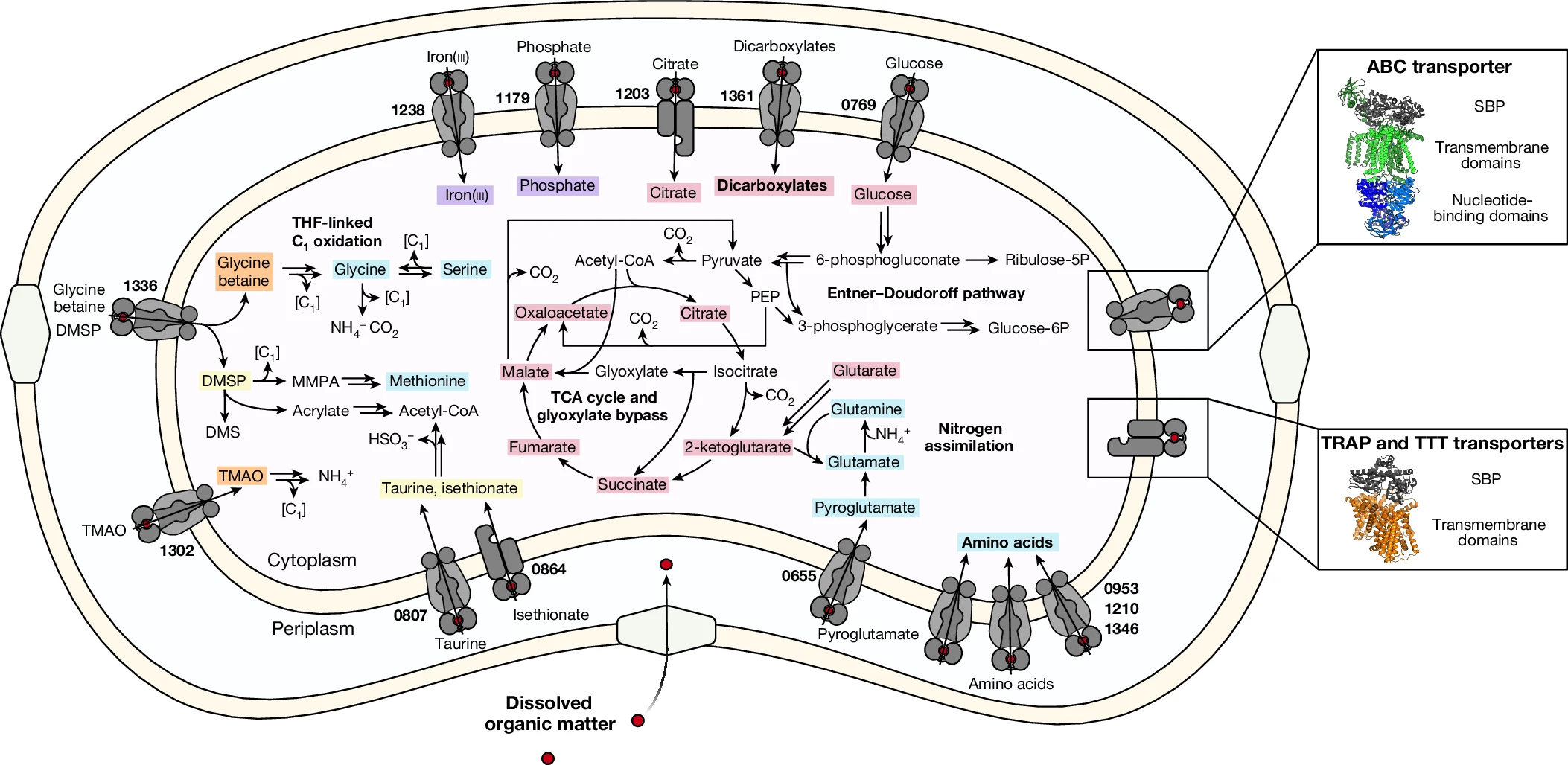
But now, a recent Nature paper by researchers from the Okinawa Institute of Science and Technology (OIST) sheds light on a crucial aspect of these bacteria. “We knew that SAR11 is a key player in important nutrient cycles, such as carbon and sulfur exchanges, but we didn’t know the full extent,” explains Dr. Ben Clifton, first author of the paper, adding that “now, by comprehensively mapping out the transport proteins of the bacteria, we have a much better picture of how SAR11 slots into these cycles.” Professor Paola Laurino, the senior author, credits global seawater sampling projects like the Tara Oceans project for providing the metagenomic data that made this breakthrough possible: “these datasets have allowed us to link genomic data to protein function.”
Piecing together the protein puzzle
Transport proteins are vital for moving nutrients in and out of bacterial cells, shaping how bacteria interact with their environment. This is especially significant for SAR11 bacteria, whose nutrient uptake has a broad impact on global nutrient cycles. But despite their abundance in the oceans, these bacteria are difficult to study due to their specific growth requirements. To overcome this, the researchers genetically modified E. coli bacteria to express SAR11 transport proteins, allowing them to study the proteins in the lab.
Analyzing these genes across the SAR11 metagenome – the genetic material common to all SAR11 species – required global data, which was made possible by extensive genomic databases. The team identified genes linked to crucial marine processes, such as a protein that interacts with DMSP, a compound vital to the sulfur cycle and climate regulation. In total, they discovered thirteen transport proteins, including those for DMSP, amino acids, glucose, and taurine, all of which have significant environmental roles.
The logistics of global nutrient cycles
“Through these experiments, we discovered specific properties of transport proteins that enable SAR11 bacteria to thrive in nutrient-poor environments. This could not have been discovered from just looking at the genomic makeup alone,” summarizes Dr. Clifton. However, the team’s research on SAR11 is far from over. Having identified the proteins responsible for nutrient transport, they are now delving into the metabolic pathways to understand how these nutrients are utilized and converted within the bacteria. Additionally, in collaboration with the Weizmann Institute of Science, they are exploring how SAR11 interacts with its environment before absorbing nutrients.
This study is part of a growing trend that links environmental DNA to protein function, paving the way for new discoveries about how microscopic life forms influence global processes. As Prof. Laurino puts it, “by bridging the macro perspective of marine diversity and the micro perspective of protein biochemistry, we’re setting the stage for further questions about how bacterial proteins fit into global nutrient cycles, and how these bacteria contribute to, and are affected by, climate change and shifts in ocean biodiversity.”
